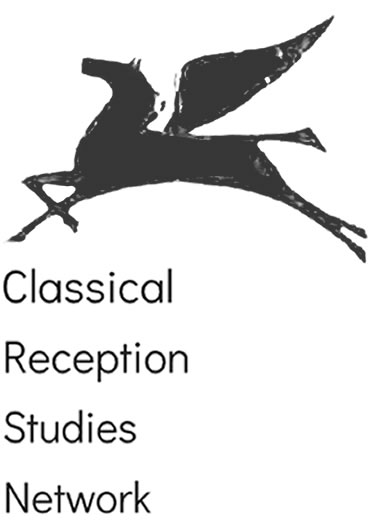But we are tyrants too. We look, but we see nothing. Someone speaks to us, but we hear nothing. And we go on in our endlessly narcissistic self-justification, adding Facebook updates and posting on Instagram. Tragedy is about many things, but it is centrally concerned with the conditions for actually seeing and actually hearing. In making us blind, we might finally achieve insight, unblock our ears and stop the droning surf of the endless song of ourselves: me, me, me, this is all for me (really?). […] The tyrant experiences no shame. But we also have no shame. We are also little, shameless tyrants…
Simon Critchley, 2019, Tragedy, The Greeks, and Us, p. 15

Antigone (not quite/quiet): A Tragedy in Three Parts
by Prof. Mark Fleishman
Sophocles’ Antigone is a play about a society at the dawn of democracy, coming to terms with the aftermath of a civil war, a society struggling to – unable, perhaps, to – deal with its dead. It is also a play about irreconcilable systems of law, of gender and of generation. But this was not a production of Sophocles’ Antigone. It was a set of responses to the play from the perspective of three of the play’s characters: Ismene, Antigone, Tiresias. And from a perspective in time that we might call our postcolonial present which is tragic in the way that it cannot escape the shameful past that is supposed to have passed but continues to haunt our every current moment. In this respect it is about re-membering, a desperate attempt to put together a fractured body. But the dramaturgical impulse arose from a realization of how separated we are so many years after the supposed end of apartheid. How despite the fact that we continue to live together in close proximity, we do not/cannot/wish not to see or understand each other, across intersecting divisions of race, gender, class and sexuality. Like the three parts of this triptych, we reach but cannot touch; we touch but cannot bind into any sense of a whole; we remain inevitably inconvenient to each other, immovable from our common landscape. Despite lofty ambitions of reconciliation and social cohesion, or our deepest, darkest desires to be rid of each other, we are stuck together.
And we are blind. Tiresias was blinded by the sight of the naked body of Athena; we have been blinded by the promise of freedom – so valuable and yet we have blindly handed it over, entrusted it to those in power, those without apparent care, or concern, or comprehension. And in our blindness we are uncomfortable and angry and ashamed, with no alternative but to carry on, together.

In 2019, our first project, Antigone (not quite/quiet) was staged at the Baxter Theatre Centre in Cape Town. The production is structured in three sections. The first section, Ismene, is a solo piece, performed by Jennie Reznek (white, female and 60 years old) dressed in white and covered in white makeup from head to foot. It runs for about 45 minutes and is based on a text written by Reznek which plays out like an extended soliloquy or aria. This first section is most closely aligned to a sense of what might be understood as drama.

The second section, Antigone, focuses on Antigone trapped in the cave/death. It is performed by a thirteen-person chorus – a multiple embodiment of the eponymous heroine of Sophocles play (all but one black, a mix of male and female but all wearing black dresses, and all under 35 years old most in their 20s). It is a 40 minute vocal/musical work composed and arranged by Neo Muyanga. It is made up in part of original material based on poetic text in response to the play Antigone, written for the production by poet Mandisa Vundla; in part of struggle songs, church music and laments; and in part of fragments of text from the original play. It can best be described as post-dramatic in style to use Hans-Thies Lehmann’s term. This section can best be described as Antigone’s scream – the resounding voice of the youth of the new South Africa, angry with the slow pace of change, with the corruption of their parents’ generation who when handed the precious possibility of freedom, were unable or unwilling to care for it.

The third section, Tiresias, is a rendition of Tiresias’s vision in a 15 minute video installation focused on blindness on three flat-screen TVs mounted like a triptych at the back of the rectangular stage space. The text here is a poem in isiXhosa by SEK Mqhayi written in 1908 about the relationship between the amaXhosa king, Ngqika, and his dog, Mbambushe. The poem, with the title ‘UMbambushe Induna ka Lwaganda’ (Mbambushe the headman/councillor of Lwaganda), is preceded here as in the original by a contextualizing story (in English) in which the king gives his dog so much violent power over the community that the dog eventually turns on the king himself and the king is forced to kill the dog with his own hands. The poem itself is a meditation on leadership or the lack thereof and has an idiomatic sub-title: “Ninganiki Okungcwele Ezinjeni” (Give not unto dogs sacred things) which became the sub-title for the production too. This section completes the shift of style or mode from drama to live performance to screen media.
The production was designed by Craig Leo, with choreography by Ina Wichterich and video design by Kirsty Cumming. Performers were drawn from the CTDPS postgraduate cohort and trainees at Magnet Theatre who made up the Antigone Chorus, with Jennie Reznek (Ismene) and Faniswa Yisa (Tiresias).
- n.b. Images at head of post by Mark Wessels.

